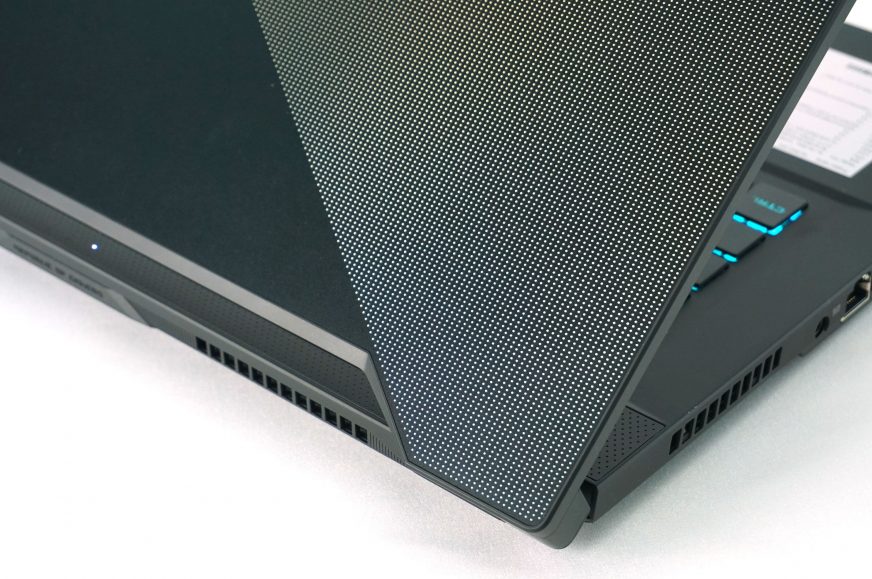Rendering and Geekbench
You definitely know the ROG Zephyrus gaming line by Asus well, as we only recently brought you a test of the top-notch model Duo 15. The Zephyrus line started with one product, but today several models bear this tag. One of them is the M15 which, however, has little in common with the original Zephyrus. On the outside, it looks like a regular laptop without gimmicks in the form of a secondary display or the AAS.
Rendering, Geekbench
The tested configuration of the Zephyrus M15 is equipped with a 6-core i7-10750H. It is actually a successor to the i7-9750H which offers mainly higher clock speed in Turbo Boost from 4.5 GHz to 5 GHz. Also, faster 2933 MHz memories are now supported, as opposed to 2666 MHz at the predecessor, increasing the bandwidth from 41.8 to 45.8 GB/s. The All-core Turbo is at 4.3 GHz. You can also get the i7-10875H in the M15 which has 8 cores, a Turbo 5.1 GHz and an all-core 4.3 GHz. It offers support for 3200 MHz memory though, just as the Zephyrus Duo 15 did. However, the new i7-10750H will have a hard time compared to the AMD Renoir we tested in the Zephyrus G14. Let’s see what the differences are in practice.
Let’s start traditionally with the Cinebench R15 for a first sight at raw performance of the processor. Compare 10750H to 9750H and we see a 7% increase in performance over Scar III. Compared to Renoir, the new i7 in single core is 3% faster, but the i9 from Duo 15 is another 7% better. In Multicore, the differences between the 9th and 10th generation have been reduced to only 3%. Renoir is already better here thanks to more cores/threads by solid 23%. The M15 is already losing 37% on Duo 15 with i9.
The newer R20 shows a small 2% lead of Renoir over the new i7. The M15 is 9% faster than last year’s Scar III, but loses 6% on Duo 15. In multicore, the M15 gained a 12% lead over the Scar III, but again loses 19 and 28% on the G14 and Duo 15, both with 8-core processors, which is expected.
The Cinebench and POV-Ray practical tests will not be advantageous for the M15 compared to the 8-core competition. In Blender, it has an 8% lead over the Scar III, but the G14 is 15% faster and the Duo 15 even 37% faster. In POV-Ray, there is again an 8% difference between the old and the new i7, and it loses 32-38% on 8-cores.
Geekbench in 3 versions again gives a little hint at the differences between the individual processors in laptops. We’re comparing the Zephyrus M15 to the Scar III and G14. The new i7 is 4% faster in single-core tests in all versions. AMD in the G14 is 11% slower but then 5 and 1% faster. Multicore compared to the old i7 in Scar III is again in favor of the M14, but the differences are only 2/4/2%. As you probably already know, multicore is the strength of Renoir and the G14 is therefore 41/7/17% faster than i7 in the M15. Again, however, it should be noted that we are comparing 6 and 8-core processors which means obvious differences in multicore performance.
In Compute, we’re comparing performance of the 2070 in the Scar III and the newer 2070 Super Max-Q in the Zephyrus M15. We can also focus on the differences between the 2070 Super and 2080 Super in the M15 and Duo 15.
Geekbench 4 shows weird results and Scar with older graphics card, although not in the Max-Q version, is 11% faster than the M15. The difference between the M15 and the Duo 15 is only 1% in favor of the top model. On the contrary, the newer Geekbench 5 already shows the expected results and thus a 2% lead of the new Super version against Scar III and a loss of 16% against the 2080 Super in Duo 15.
- Contents
- Specs and details
- Testing methodology
- Display tests
- Rendering and Geekbench
- 3D/PC Mark and Unigine Heaven/Superposition
- Gaming tests – dedicated graphics card
- Encryption, encoding
- Memory and storage tests
- Heating and battery life
- Blender – CPU, CUDA and Optix test
- Performance modes
- Utility application
- Conclusion











